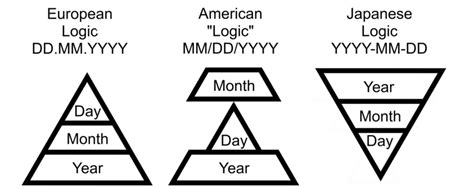September 2020
Just Stylin’
One thing I seem to do a lot of is write. Correspondence, emails, technical reports, contract documents, newsletters, memoranda, and the occasional blog posting. Over the years, I have tried to adhere to various self-imposed ‘rules’ for what goes into the composition. They are admittedly idiosyncratic, and only loosely based on logic and precedent. But, they are what allows me to wear a self-satisfied smirk, as I complete my various documents. Somewhat humorously, when I have put some of them out there for comment, I have been vilified by other writers for what they see as outdated or downright ‘wrong’. OK, let’s have some fun.
Serial Commas , , ,
Various manuals of style have different instructions about the recommended use of commas in a list of three or more things. While some say that use of a comma before the last “and” or “or” is optional, I don’t buy it.
Eeny, meeny, miny, and mo
not,
Eeny, meeny, miny and mo
Apart from the style guide’s recommendation, I have another reason. Every once in a while, my list of ‘things’ includes something that includes an “and” in its use: “time and materials”, “operations and maintenance”, or “head and shoulders”. Use of the serial comma allows for some improved clarity.
For example, “There are three options for form of agreement: lump sum, cost of the work plus a fee, or time and materials.” Is much better than “There are three options for form of agreement: lump sum, cost of the work plus a fee or time and materials.”
. - - Bullet Points
On the subject of lists, I find them harder to grasp when they are embedded in the sentence structure. Consequently, my default when a list has three or more items is to use bullets – even bullets with sub-bullets. Look at the following:
There are three options for form of agreement:
- Lump sum
- Cost of the work plus a fee
- Time and materials
or, with more detail:
There are three options for form of agreement:
- Lump sum
- Where the cost is a stipulated sum
- Cost of the work plus a fee
- Where the cost is recorded, and the Contractor adds a fee
- Time and materials
- Where hourly rates and material cost are added together
The use of bullet points has collateral issues.
- All of the bullets need to have common grammatical structure.
- Parts of speech, voice, tense, etc. should be consistent. For some reason, this can be challenging.
- Then there’s the uncertainty as to whether the bullets have periods at the end of each one.
- For this, I made up my own rules. When the bullet is not a sentence, I don’t use periods. Conversely, when the bullet is one or more complete sentences, I use periods. This works for me, if for no one else.
Conversational Tone
Many of my reports are presented to higher education clients – a group that is particularly demanding in its expectations for writing clarity, correctness, and accuracy. With this group, misspellings and typos have a way of negating even the most insightful observations. Consequently, reports are carefully composed with complete sentences, formal language, and the best vocabulary I can muster.
Letters and memoranda are only slightly less formal, with composition that may be a tad less “academic” than the typical report.
On the other hand, for newsletters and blog postings, I make a concerted effort for them to be less formal and much more ‘conversational’. Use of incomplete sentences, interjections of comments, and descriptions using everyday terminology are very intentional. My objective is to relate to readers in a manner that approximates as closely as possible the dialog we might have if we were face to face.
 Date Format Date Format
I like the European format. 6 September 2020, not September 6, 2020, or September 6th, 2020. Why?
- It eliminates the need for the confusing comma.
- It has the day, month, and year in ascending order.
- It eliminates the dilemma of using the cardinal number or the ordinal number. It’s always the cardinal number, e.g., 6, not 6th.
- It makes me a little different – which I like.
I think this all started when I chose to get my college education in Canada. It’s too bad this leaves an inconsistency with the short version of dates. In Europe, 6 September 2020 is 6/9/2020; while here in the US, it’s 9/6/2020. That’s why you’ll rarely see short-form dates in my writing.
Use of Acronyms and Jargon
Long ago, I discovered that reports I write can be distributed to many people outside the target audience group. Consequently, the casual use of industry jargon and acronyms is generally a liability.
My standard approach is to use the full term in the first instance, followed by the acronym in parentheses.
For example:
- Operations and Maintenance (O&M)
- Computerized Maintenance Management System (CMMS)
- Time and Materials (T&M)
- Occupational Safety and Health Administration (OSHA)
Even with the clarification, I will be circumspect in the repeated use of acronyms, when I think readers might stumble over them.
CaPiTaLiZaTiOn
Perhaps out of some industry-related vanity, I consider our various jobs to be more titular than descriptive. Consequently, I’m likely to capitalize their first letters. Architect, Contractor, Project Manager, Facilities Manager, and Owner’s Representative are all examples of titles where this capitalization is likely. Proofreaders have taken issue with my choices. But, I’m sticking to my guns.
Dashes — Instead of Hyphens -
I buy into the notion that hyphens are used for constructing two-word connections that function together (e.g., two-word, toll-free, two-thirds). Hyphens are the wrong punctuation for breaking a sentence with parenthetical or additional thoughts. That’s the job of a dash. In fact, according to the Chicago Manual of Style, more precisely, that’s the job of an em dash.
As the purists will know, there are three types of dashes: hyphens, en dashes, and em dashes – each one with a specific intended purpose. Microsoft Word has trouble dealing with the distinction, and only offers to AutoCorrect Hyphens (--) with Dash (–). The way Word AutoCorrect appears to work is that embedded hyphens remain unchanged, while stand-alone hyphens will get AutoCorrected to generic dashes. I’ve decided to live with that choice, imperfect as that may be.
Double Spaces After Period .
I’ve written about this before – and received enormous blow-back.
I like double spaces between sentences – perhaps for the same reason I like to use commas to generate pauses between thoughts in a sentence. For me, it’s a matter of structure and organization. I like the linguistic pauses that commas create; and I like it when complete sentences stand apart, with a certain amount of self-sufficiency.
Yes, I am well aware that double-spacing is a vestige of typewriter typing with monospaced lettering. Yes, I am aware that style guides recommend single spaces after a period. Yes, I am aware word processing applications may auto-correct for the error of double spaces. And yes, I am aware of the opinion that “Nothing Says Over 40 Like Two Spaces after a Period”. Sorry – I still like what I like.
I have also found that some platforms (such as the very one you are reading right now) don’t have the right HTML logic to deal with two spaces that occur at the end of a line. MailChimp, for example, will put one space at the end of the line and the second space at the beginning of the next line. Frustrating.
Other Rules
There are many manuals of style available as reference. It is said the Chicago Manual of Style referenced above carries weight in academia. I also have the Strunk and White Elements of Style sitting on the shelf. Truth be told, I rarely refer to them, relying on intuition for the most part.
Nevertheless, when stymied by a composition issue, they’ll get opened. This newsletter instigated that more than a few times.
My Rules
So, since I am for the most part making up my own rules, I get to decide how rigorously to follow them. That way, when inconsistencies creep in (as they often do), I will claim intentionality. Mostly, though, I try to stay on track.
Your Rules
If you have any, yours are likely to be different than mine. In fact, that’s a virtual certainty, given the quirkiness of some of my choices. Regardless, give it a go. Make them up, and try to stick to them. Better writing will result. Good luck.
Missed earlier newsletters? Find them here:
July 2020 “Reflections on Our Covid Times”
February 2020 “Quirky Clients – The Smart Version”
September 2019 “OPM Cheerleader”
June 2019 “Can You Perform?”
February 2019 “Today's Word”
October 2018 “The Case for DIversity-Architect's Version”
June 2018 “A Capital Idea”
March 2018 “Me Too?”
January 2018 “R U Trending?”
October 2017 “Do You Measure Up?”
August 2017 “I'm an Architect and I'm Here to Help”
January 2017 “The Future of Higher Education”
November 2016 “The Owner as CM?”
August 2016 “Don't you just hate...”
June 2016 “Duck Testing”
April 2016 “Once Upon a Time...”
January 2016 “I want to take you higher”
November 2015 “Moderating in all Things?”
July 2015 “Alphabet City”
May 2015 “Acey Trey Trey Trey?”
January 2015 “Nature or Nurture?”
August 2014 “Acey Trey Trey?”
June 2014 “The Seven Deadly Sins”
March 2014 “Thar She Blows!”
November 2013 “Giving Thanks”
September 2013 “Back to School?”
June 2013 “What Time is It?”
March 2013 “Acey Deucey?”
January 2013 “A Swamp Full of Alligators”
October 2012 “Plan to Live Forever, Part Deux”
July 2012 “A Midsummer Dream”
May 2012 “Are you Virtually Working?”
March 2012 “Your Huddled Masses”
January 2012 “Observing Observations”
October 2011 “I Want What I Want”
August 2011 “A Beach Read”
May 2011 “NeoLuddite or Technophile?”
March 2011 “Do Your Silos Leak?”
January 2011 “Plan to Live Forever!”
November 2010 “May I Have A Plan, Master?”
September 2010 “How do we choose?”
July 2010 “Good People Behaving Badly”
May 2010 “LEED: LEADing or Dead Weight?”
March 2010 “Why does it cost so much?”
January 2010 “Design/Builders show us your softer side.”
November 2009 “What the Facilities?”
September 2009 “Why Do Architects Make Good Owner’s Reps?” |